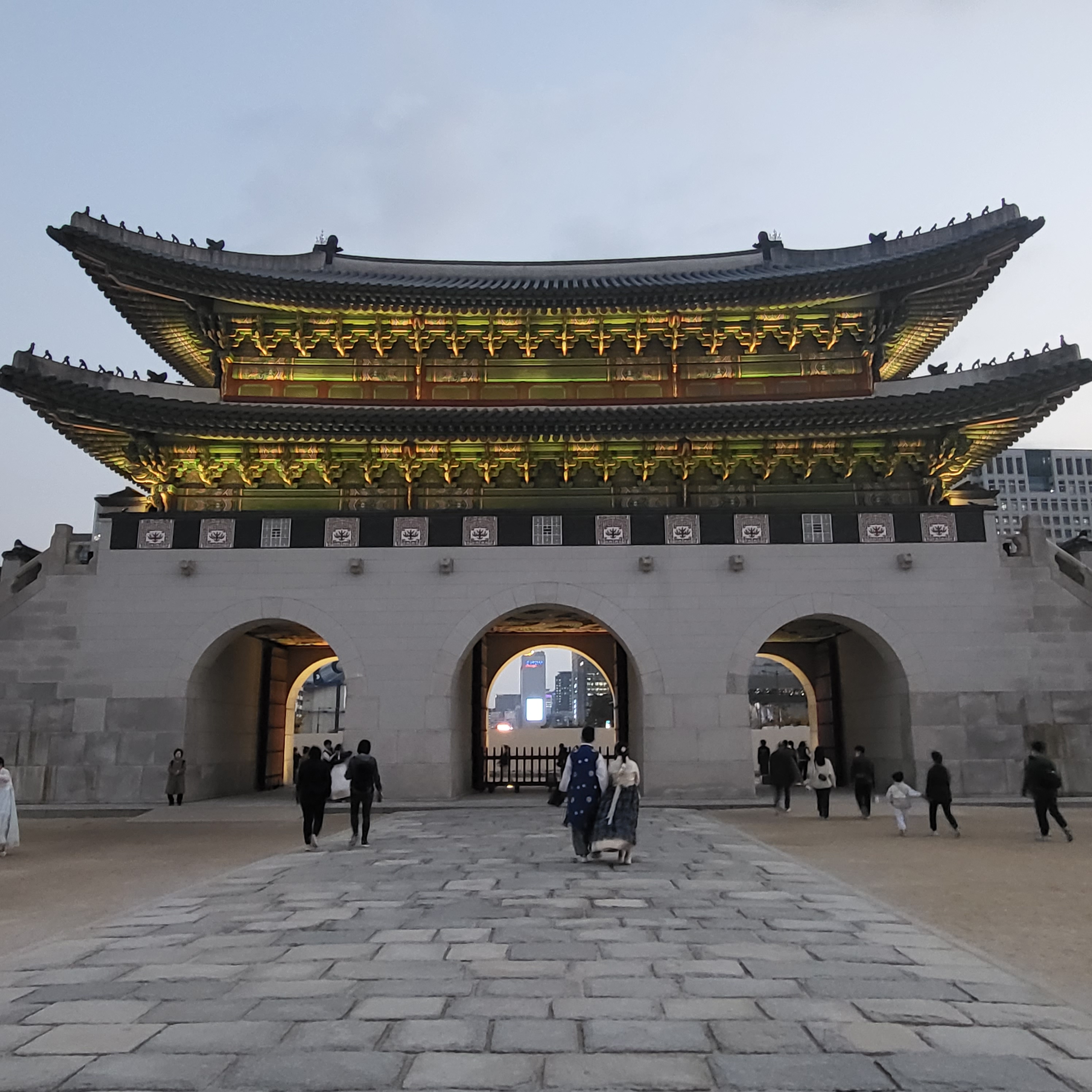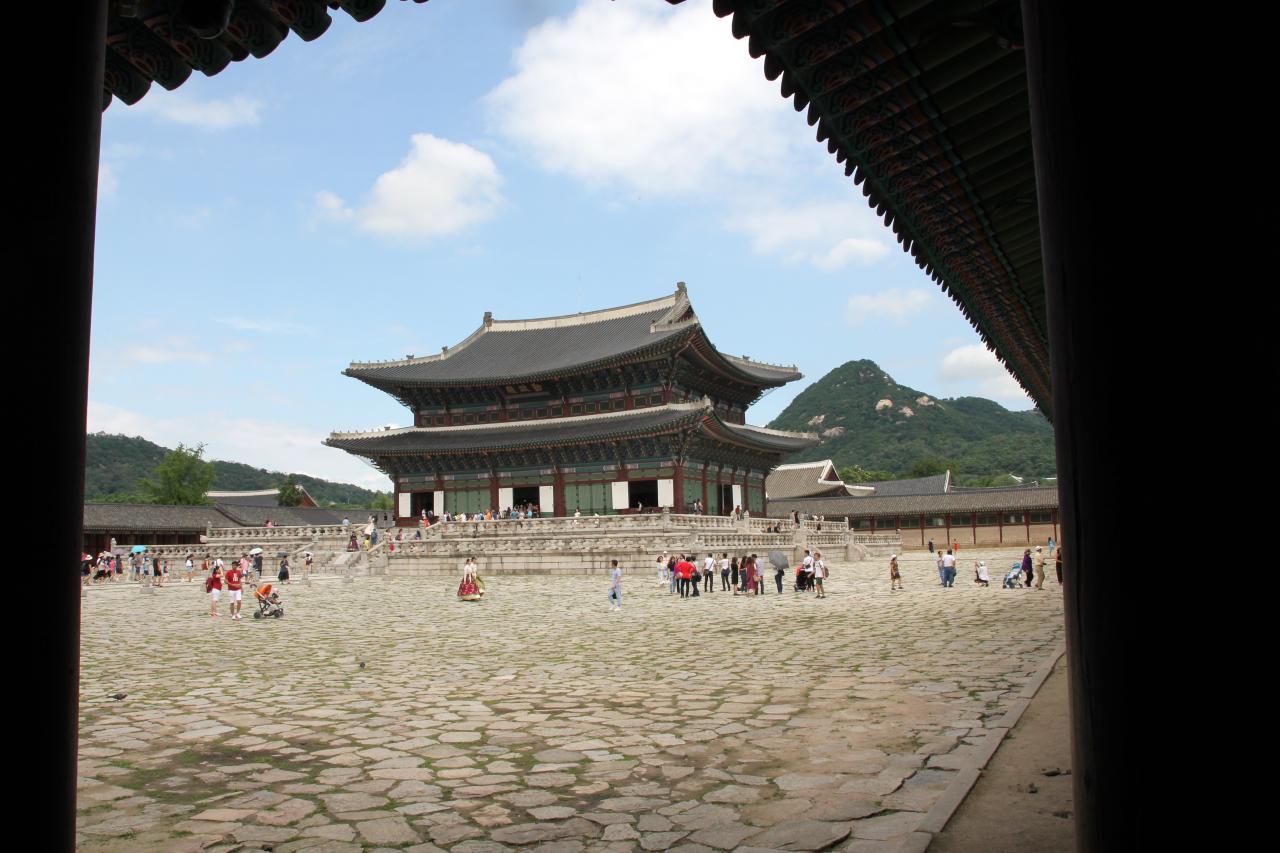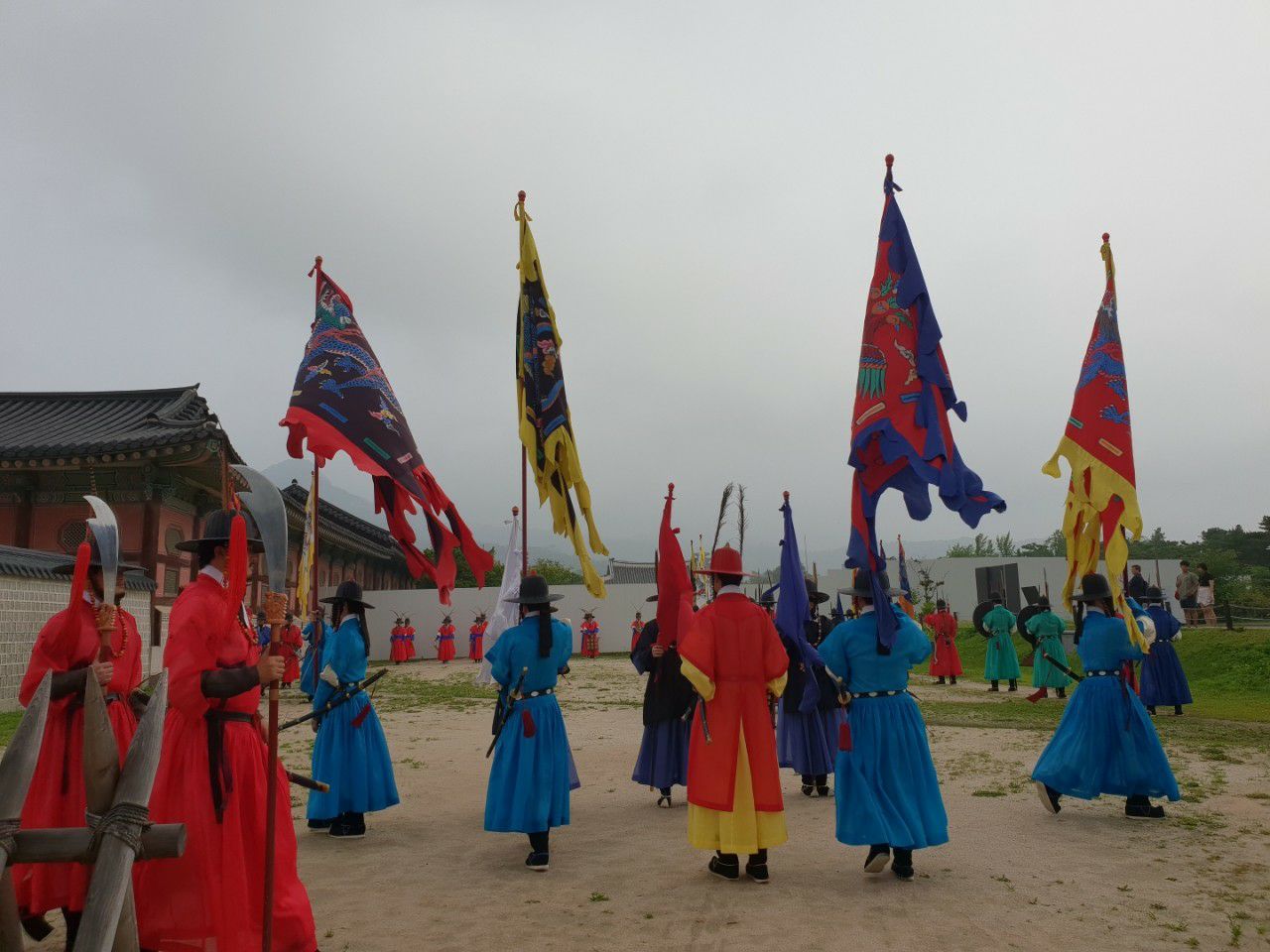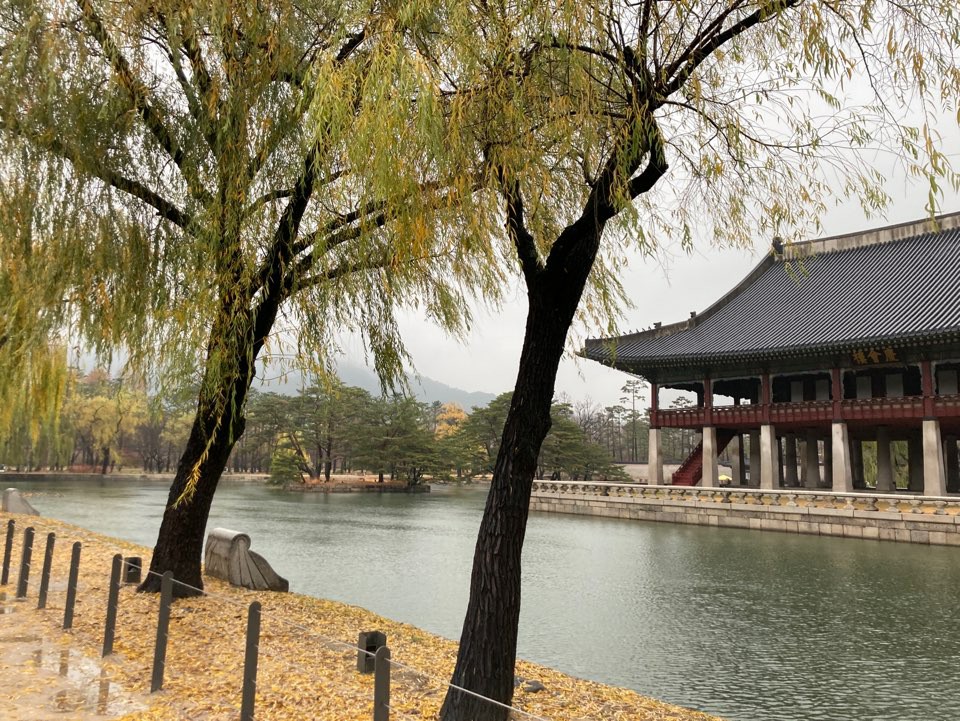 코스 스팟
Course Spot
코스 스팟
Course Spot
 스팟 정보
Spot Infomation
스팟 정보
Spot Infomation




경복궁 소개
경복궁은 14세기 말 태조 이성계에 의하여 당시의 수도였던 한양(현재의 서울)에 창건된 이래 600년이 넘는 현재까지 원래의 위치를 지키고 있다. 16세기 말, 임진왜란으로 궁궐 전체가 불타 사라질 때까지 조선왕조 전반기 약 200년 동안 왕의 통치와 주거 공간으로 법궁의 역할을 하였다.
조선 후기 약 270년 동안 경복궁은 창덕궁에게 법궁의 자리를 내어주고 폐허로 방치되었다. 19세기 중반이 되어서야 흥선대원군에 의해 원래 규모보다 훨씬 큰 규모로 복원되어 법궁의 역할을 되찾게 되었으나 불과 30년이 지나 발생한 명성황후 시해사건과 아관파천으로 인해 경복궁은 다시 본래 기능을 상실한다.
이후 일제강점기와 한국전쟁 동안에 수많은 수난을 겪으며 철저하게 훼손된 경복궁은 20세기 후반에 와서야 복원이 시작되었다. 일제 강점기 조선총독부, 해방 후 중앙청, 국립박물관으로 사용되었던 건물을 없애고 그 자리에 흥례문, 영제교를 다시 세우고, 정문인 광화문을 제 자리에 옮기는 등 중요 건축물에 대한 복원작업을 거쳐 내외국인이 가장 즐겨 찾는 역사관광 명소가 되었다. 정문인 광화문 앞쪽으로 육조거리 복원 등 광화문 광장 조성사업이 현재 진행 중이며 궐내각사 등의 단계적인 복원사업이 계속 이루어질 예정이다.
조선 후기 약 270년 동안 경복궁은 창덕궁에게 법궁의 자리를 내어주고 폐허로 방치되었다. 19세기 중반이 되어서야 흥선대원군에 의해 원래 규모보다 훨씬 큰 규모로 복원되어 법궁의 역할을 되찾게 되었으나 불과 30년이 지나 발생한 명성황후 시해사건과 아관파천으로 인해 경복궁은 다시 본래 기능을 상실한다.
이후 일제강점기와 한국전쟁 동안에 수많은 수난을 겪으며 철저하게 훼손된 경복궁은 20세기 후반에 와서야 복원이 시작되었다. 일제 강점기 조선총독부, 해방 후 중앙청, 국립박물관으로 사용되었던 건물을 없애고 그 자리에 흥례문, 영제교를 다시 세우고, 정문인 광화문을 제 자리에 옮기는 등 중요 건축물에 대한 복원작업을 거쳐 내외국인이 가장 즐겨 찾는 역사관광 명소가 되었다. 정문인 광화문 앞쪽으로 육조거리 복원 등 광화문 광장 조성사업이 현재 진행 중이며 궐내각사 등의 단계적인 복원사업이 계속 이루어질 예정이다.
Gyeongbokgung Palace
Gyeongbokgung Palace has maintained its original position for more than 600 years since it was founded in Hanyang (now Seoul) by Taejo Lee Seong-gye in the late 14th century. At the end of the 16th century, until the entire palace was burned down by the Japanese Invasion in 1592, it served as a legal palace for about 200 years as a king’s rule and residential space in the first half of the Joseon Dynasty.
For about 270 years in the late Joseon Dynasty, Gyeongbokgung Palace gave Changdeokgung Palace the seat of the main palace and was left as ruins. It was not until the mid-19th century that Heungseon Daewongun restored the main palace to a much larger scale than it was, but Gyeongbokgung Palace lost its original function again due to the Empress Myeongseong incident and Agwanpacheon(아관파천) that occurred only 30 years later.
Afterwards, Gyeongbokgung Palace, which was thoroughly damaged after suffering numerous hardships during the Japanese colonial era and the Korean War, began to be restored only in the late 20th century. It has become the most popular historical and tourist attraction for Koreans and foreigners through the restoration of important buildings, after removing buildings used as the Japanese Government-General of Korea, the Central Office after liberation, and the National Museum. A project to create Gwanghwamun Square, including the restoration of Yukjo Street in front of Gwanghwamun, the main gate is currently underway, and phased restoration project including that of Geollagaksa will continue.
For about 270 years in the late Joseon Dynasty, Gyeongbokgung Palace gave Changdeokgung Palace the seat of the main palace and was left as ruins. It was not until the mid-19th century that Heungseon Daewongun restored the main palace to a much larger scale than it was, but Gyeongbokgung Palace lost its original function again due to the Empress Myeongseong incident and Agwanpacheon(아관파천) that occurred only 30 years later.
Afterwards, Gyeongbokgung Palace, which was thoroughly damaged after suffering numerous hardships during the Japanese colonial era and the Korean War, began to be restored only in the late 20th century. It has become the most popular historical and tourist attraction for Koreans and foreigners through the restoration of important buildings, after removing buildings used as the Japanese Government-General of Korea, the Central Office after liberation, and the National Museum. A project to create Gwanghwamun Square, including the restoration of Yukjo Street in front of Gwanghwamun, the main gate is currently underway, and phased restoration project including that of Geollagaksa will continue.
ⅹ
